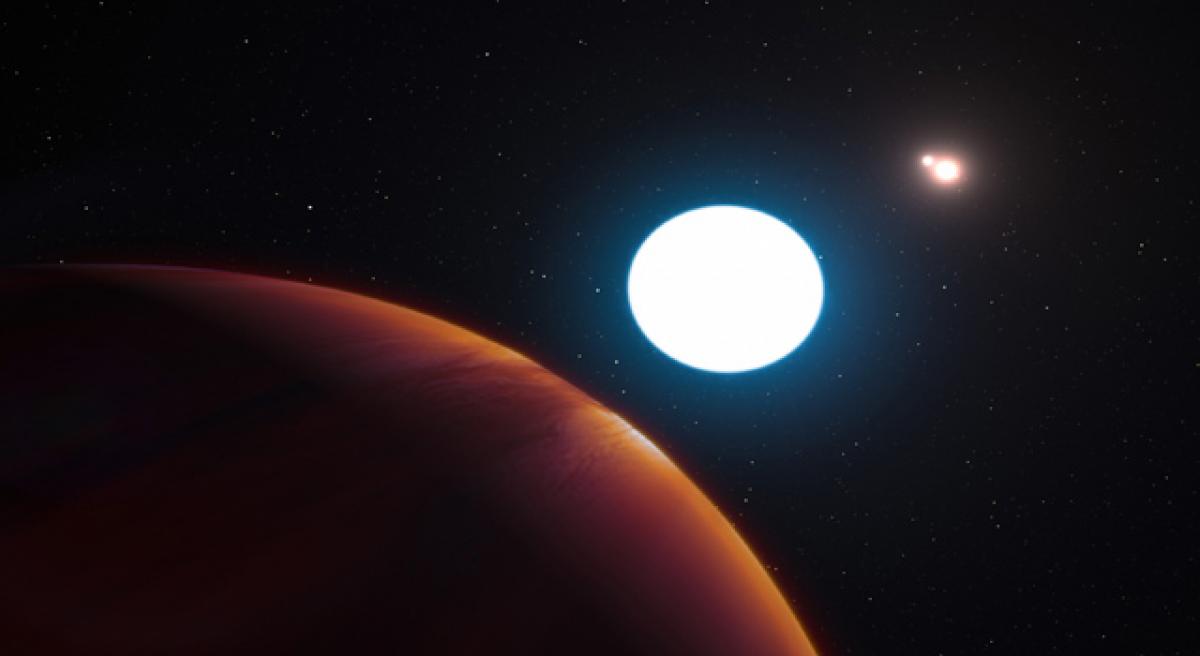Live
- Congress killers of Samvidhan: Modi
- Bejan Daruwalla’s horoscope
- Study warns: Ultra-processed foods may accelerate biological age
- CM pledges more political opportunities to Madigas
- Vizag attracts tourists as much as Kashmir
- Year-Ender 2024 Guide: Home remedies to relieve Period Pain.
- All India crafts mela begins today
- TTD gears up for Vaikunta Ekadasi fete
- Express Yourself
- Rajadhiraaj: Love. Life. Leela
Just In

A team of astronomers has discovered a strange world with its three suns in the sky, witnessing either constant daylight or triple sunrises and sunsets each day depending on the seasons that may last longer than human lifetimes.
New York: A team of astronomers has discovered a strange world with its three suns in the sky, witnessing either constant daylight or triple sunrises and sunsets each day depending on the seasons that may last longer than human lifetimes.
Using direct imaging, the team led by the University of Arizona researchers found that the giant planet HD 131399Ab is unlike any other known world with the widest known orbit within a multi-star system.
Located about 340 light years from Earth in the constellation Centaurus, HD 131399Ab is believed to be about 16 million years old, making it one of the youngest exoplanets discovered to date.
"HD 131399Ab is one of the few exoplanets that have been directly imaged, and it's the first one in such an interesting dynamical configuration," said Daniel Apai from the University of Arizona.
According to study lead author Kevin Wagner, a doctoral student in Apai's research group, for about half of the planet’s orbit, which lasts 550 Earth-years, three stars are visible in the sky, the fainter two always much closer together, and changing in apparent separation from the brightest star throughout the year.
"For much of the planet’s year the stars appear close together, giving it a familiar night-side and day-side with a unique triple-sunset and sunrise each day," Wagner said.
"As the planet orbits and the stars grow farther apart each day, they reach a point where the setting of one coincides with the rising of the other - at which point the planet is in near-constant daytime for about one-quarter of its orbit, or roughly 140 Earth-years," he added.
The study was recently published in the journal Science. The researchers used the Spectro-Polarimetric High-Contrast Exoplanet Research Instrument (SPHERE) installed on the Very Large Telescope operated by the European Southern Observatory in Chile to make the discovery.
Planets in multi-star systems are of special interest to astronomers and planetary scientists because they provide an example of how planet formation functions in these extreme scenarios.
While multi-star systems seem exotic to us in our orbit around our solitary star - multi-star systems are in fact just as common as single stars.

© 2024 Hyderabad Media House Limited/The Hans India. All rights reserved. Powered by hocalwire.com







